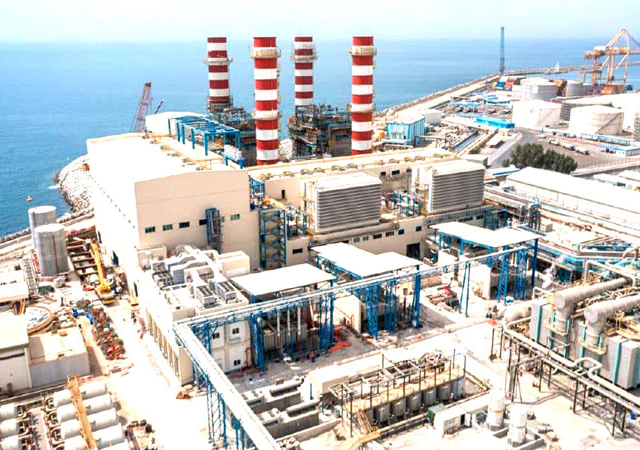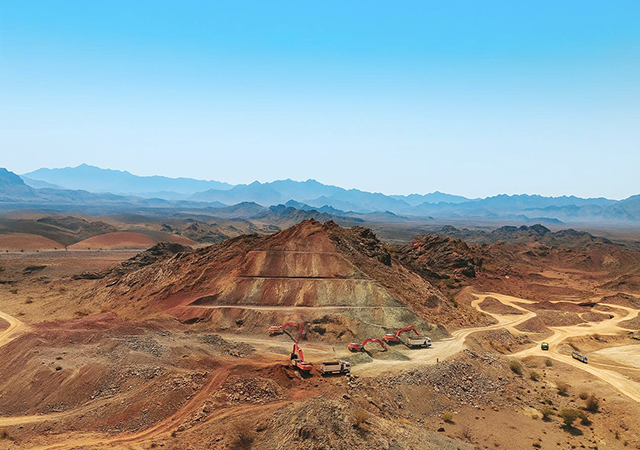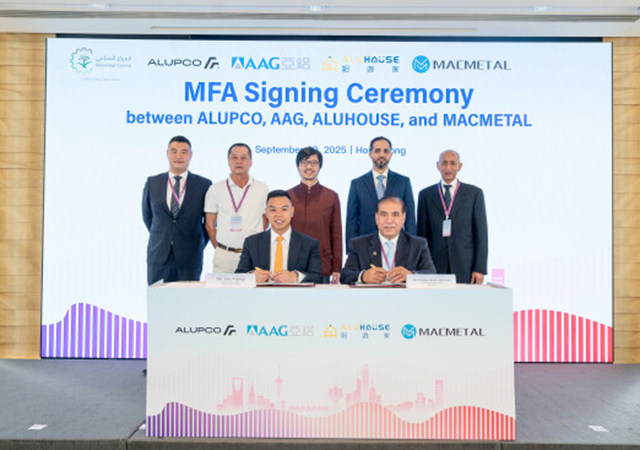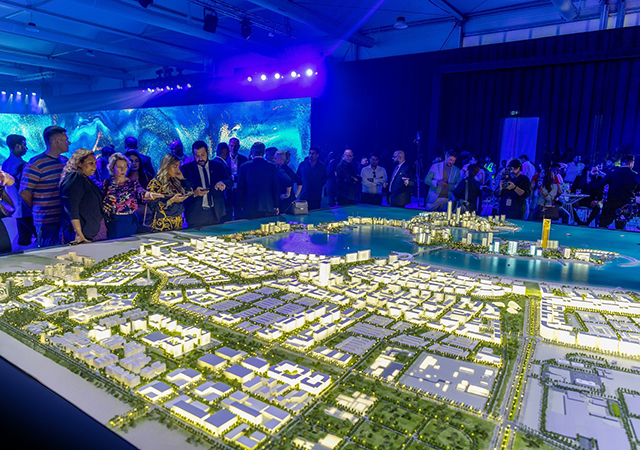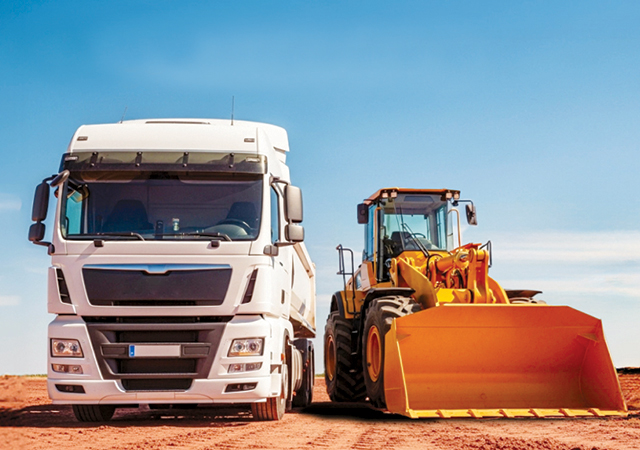
 Dr Chebil ... “work on both the Dubai and Ras Al Khaimah projects will start this year”.
Dr Chebil ... “work on both the Dubai and Ras Al Khaimah projects will start this year”.
Plans for a vertiport in Ras Al Khaimah were announced last month by VPorts, a world leader in the design, construction and operation of Advanced Air Mobility (AAM) infrastructure.
This follows an earlier announcement of plans to set up an AAM Integrator World Centre in Dubai.
Speaking to Gulf Construction’s Sree Bhat, Dr Fethi Chebil, President and Founder of VPorts, said work on both the Dubai and Ras Al Khaimah projects will start this year and the company is expected to conduct its first flight test in 2024.
“Yes, you can fly on an eVOTL in Dubai or Ras Al Khaimah in 2024 if the regulator certifies the facilities and the machine,” he said.
Vports signed a memorandum of understanding (MOU) with Ras Al Khaimah (RAK) Airport to build and operate the vertiport, during the Arab Aviation Summit in Ras Al Khaimah last month.
This follows the company signing a strategic agreement in December with the UAE General Civil Aviation Authority (GCAA) and the Mohammed bin Rashid Aerospace Hub (MBRAH) to establish the world’s first AAM Integrator World Centre in Dubai South.
Dr Chebil said the company is the only organisation authorised to operate vertiports in the UAE and it has a 50-year concession.
The Ras Al Khaimah vertiport, which will be established on a 10,000-sq-m site, can accommodate all types of electric vertical take-off and landing (eVTOL) aircraft, he said.
 |
|
The AAM Integrator World Centre will spread over a 37,000-sq-m site in Dubai South. |
‘‘With the support of the Department of Civil Aviation of Ras Al Khaimah, we are excited to build and operate the first vertiport at Ras Al Khaimah Airport. This project will enable all AAM partners to accelerate the adoption and deployment of advanced air mobility in Ras Al Khaimah and throughout the UAE,” said Dr Chebil.
The Ras Al Khimah project is aimed at establishing a corridor between Dubai and Ras Al Khaimah to leverage the tourism potential, he said.
VPorts will also target the regional transportation of goods and the efficient movement of patients, organs for transplants and medical equipment in the region.
“Logically, the first places to set up vertiports are existing helipads,” noted Dr Chebil. “Industrial and cargo areas are also excellent options to consider. We look forward to collaborating with each and every emirate to define the location of dedicated vertiports, safety and security regulations, flight corridors, urban integration and business community engagement for this important undertaking.”
The 25-year exclusive lease agreement with MBRAH, renewable for a further 25 years, will establish the state-of-the-art AAM centre on a 37,000-sq-m site within Dubai South. The project represents an initial investment of $40 million over three years.
The ground-breaking project includes dedicated flight-testing airspace, assigned blocked airspace and innovative new technologies which will foster the global growth of the international AAM industry and accelerate the certification of eVTOL aircraft.
 |
|
The AAM centre will include 18,000 sq m of building for offices and the control centre. |
VPorts will deploy its Vertiport Operation Control Centre (VOCC) as part of the AAM Integrator World Centre in Dubai. The VOCC will have the capacity to manage air traffic integration and set up communication protocols between eVTOLs, vertiports and Air Navigation Service Providers (ANSP).
As part of this major undertaking, VPorts will work with an extended partner network to engage with key strategic poles of expertise, including eVTOL manufacturing, flight simulation and training, regulators, air navigation service providers, technology service providers, operators, electric charging manufacturers and urban planners.
“Regulation authorities from the region and around the world will be able to take advantage of the AAM Integrator World Centre in Dubai to build a regulatory framework for the benefit of their own jurisdiction, therefore increasing global efficiency and the adoption,” said Dr Chebil.
Excerpts from the interview:
How is your Dubai project going?
The Dubai project, the world’s biggest advanced air mobility project in terms of infrastructure, was announced last December. We are creating an ecosystem which is unique in Dubai and are implementing it in collaboration with the UAE GCAA and Dubai South. Called the World Integrator Centre, it will bring all the players in the advanced air mobility in one site, under one roof. They can do their flight testing here since flight testing in Europe or the US is extremely complicated. We are working with the GCAA to have a dedicated airspace for flight testing.
What are the key components of the AAM centre in Dubai?
The facility has two sides. One is the vertiport itself which is 18,000 sq m in size and will include the tarmac and the pavement. The aircraft can land and will be charged automatically, something similar to cordless charging of your phone.
The other part is 18,000 sq m of building, basically for offices of the integrated centre and the regulator and our operation control centre, which will operate all the vertiports in the GCC region.
How will the eVTOLs benefit the transportation sector?
The eVTOL machines are less expensive to buy, operate and maintain and so they are commercially extremely viable.
The Ras Al Khimah project is aimed at establishing a corridor between Dubai and Ras Al Khaimah to leverage the tourism potential. If you are flying from London to Ras Al Khaimah via Dubai, you can take a regular flight to Dubai and then an eVTOL from Dubai to Ras Al Khaimah. Cargo will be another area of operation for the eVTOLs.
How many miles can eVTOLs fly continuously?
There is a lot of technology with more than 350 companies working in the field. Normally, the average distance covered now is 100 to 150 miles. So, it covers short city-to-city distances very well. You can fly from Dubai to Ras Al Khaimah in almost 25 to 30 minutes, door to door.
One question the common man has is … it is already difficult to control traffic on roads and how will you control the new air traffic?
This is a very important question. It will be the job of the operation control centre to make sure that there is air traffic management integration. How to integrate this traffic within the existing traffic is the key. Here, technology will play a major role because there’s a lot of movement. The technology is new, so is the machine and everything is digitalised. Latest technology will be used to ensure safety.
Will eVTOLs replace cars?
No, the advanced mobility systems will not replace the car. This is only complementing the road transport, making it faster to travel between cities and parts of cities with dense traffic.
Where else are you planning vertiports?
We are a Canadian company and we have our first corridor between the US and Canada. Very soon we’ll announce another corridor in the US. The Americas is a major market for us. We are also starting discussion right now in India with connections between different states or within cities like Bengaluru being one strategy.
Which country/city will be the next in the Gulf?
We hope it is Saudi Arabia; we are having some discussion right now. The UAE is very committed and by 2030, the network will extend to all major industrial areas across the UAE, providing a sustainable transportation solution via eVTOL aircraft.
VPorts’ UAE network of vertiports will focus on locations that optimise multimodal transportation connectivity, including Dubai South, Jebel Ali, Abu Dhabi, Sharjah and Ras Al Khaimah.













(5).jpg)








.jpg)











